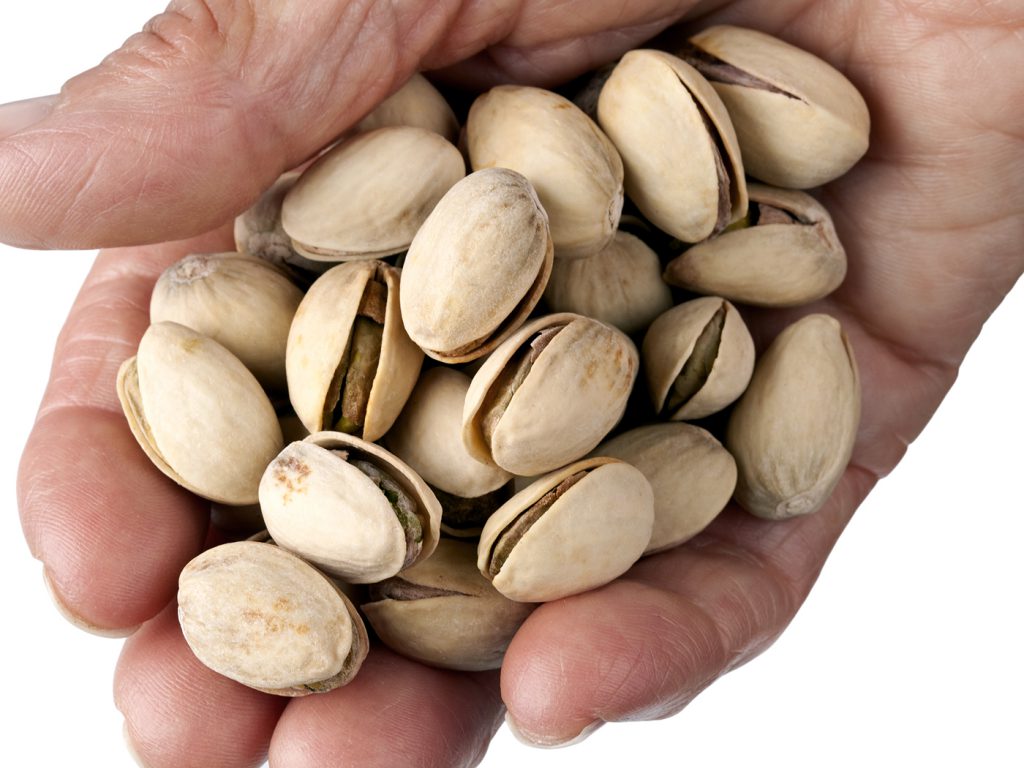7 Healthy Foods That Can Make You Fat
Are you accidentally overeating? It’s easier than you think.

Hummus is healthy, but not if you’re mindlessly munching through entire containers. “Many people assume because a food is healthy you can eat a lot of it,” says Amy Shapiro, R.D., founder of Real Nutrition NYC. You can’t. The fat and calories quickly add up.
If you have already changed what you’re eating and are still struggling to shed pounds, you might need to look at how much you’re eating. “People frequently tell me that they don’t understand why they gain weight when they eat such a healthy diet,” says Sharon Palmer, R.D., author of The Plant-Powered Diet. “But when I sit down and discuss what they are eating, it’s often the portion size, not the food choice.”
Are you accidentally overeating? Here are seven healthy foods that are all too easy to overdo.
1. Whole Grains
“Whole grain bread, pasta, and rice are rich in vitamins, minerals, fiber, and phytochemicals, but you may only need one serving at a meal if your energy needs aren’t that high,” Palmer says. “While whole grains are linked with heart health and more, it’s important to practice portion control.”
One serving of cooked pasta (½ cup) is smaller than you think—about half the size of your fist. If you’re watching your weight, use a measuring cup for pasta, oatmeal, cereal, and rice, Palmer suggests.
2. Fruit
“Fruit is filled with vitamins, minerals, fiber, antioxidants, and carbohydrates, which provide us with energy, fight disease, and keep us slim and looking good,” Shapiro says. But fruit still contains a lot of calories and sugar: A large apple has about 115 calories and 23 grams of sugar—nearly the equivalent of 6 teaspoons of the white stuff.
“Too much sugar gets stored as fat,” Shapiro says. “So I usually recommend clients stick to two to three servings of fruit daily.” For most fruits, one piece equals a serving. For berries and fruits like melons or pineapple, think ¾ cup.
Pair fruit with protein (low-fat cheese) or healthy fat (nuts or seeds) to slow digestion and keep you feeling satisfied.
3. Avocado
“Avocados can slow digestion and decrease inflammation, and are loaded with heart-healthy fat, antioxidants, vitamin E, folate, and potassium,” Shapiro says. “But a little goes a long way since avocados are 85 percent fat.”
She recommends sticking to ¼ of an avocado per meal and using it as a substitute for other fats. “Eat it with fiber like on a salad or on whole grain crackers to help you feel full.”
As for guacamole, “avoid eating it with chips, as their salt content makes you want to consume more,” Shapiro says. Keep portions in check by serving yourself 3 tablespoons of guacamole on your plate instead of eating it out of a container.
4. Olive Oil
“Olive oil is a heart-healthy fat, no doubt about it,” Palmer says. “But at 120 calories per tablespoon, it can really weigh you down.” You don’t need to drown your food in it to get the benefits, she says. “In fact, those heart health benefits quickly vanish if you gain weight.”
Her recommendation: Stick to 1 tablespoon or less for an entire recipe, or use a mister for salads and vegetables.
Subscribe to our newsletter
It's quick and easy. You could be one of the 13 million people who are eligible.
Already a member? Click to discover our 15,000+ participating locations.
Follow Us
5. Hummus
“Hummus is a great source of fiber and protein, heart-healthy fats from the olive oil and tahini used in most brands, plus calcium, iron, vitamin B6, and folic acid,” Shapiro says. But the suggested 2-tablespoon serving size has about 50 calories and 2 grams of fat.
“Before you know it, you’ve snacked on half a container, and your snack has turned into 200-plus calories,” she says. Instead, portion out 2 tablespoons on your plate and put the rest away, or buy single-serving packets.
6. Nuts
“Nuts are so good for you,” Palmer says. “They are rich in healthy fats, vitamins, minerals, fiber, phytochemicals, and protein. Studies find that if you eat about an ounce per day, you can lower your risk of heart disease.”
The problem: An ounce of nuts is only about a handful. For almonds, that’s about 164 calories and 14 grams of fat. Most people nosh on multiple servings in one sitting, so pour a portion into a cup or ramekin, and put the container away.
7. Dark Chocolate
“Touted as the healthy dessert, chocolate can be loaded with antioxidants,” Shapiro says. “Stick to dark chocolate [70 percent cocoa or more] to get the most bang for your buck and the least added sugar.” As for portions, eat no more than 1 ounce per day to keep your waistline in check. Try keeping only individually wrapped pieces around so you don’t end up eating a whole bar.
Want more tiny food tweaks that make a big difference? Check out these simple ways to cut 100-plus calories every day.





